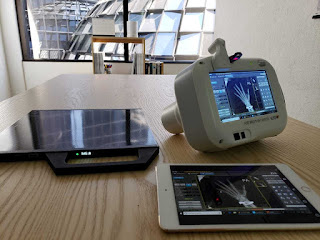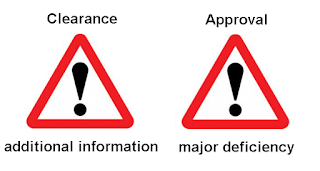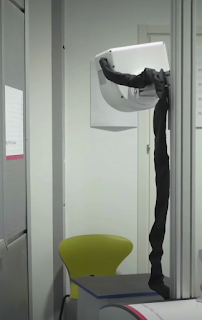Steven Koepke, who goes by koepkesd @ Stocktwits and Steven @ Yahoo, has been busy reading this blog while trying to justify the lies by the Nanox CEO that somehow the $200 (or $100, depending on the day) Nanox.Tube can replace the $150,000 modern CT tube (these are "list prices," of course).
For the longest time I was trying to figure out how Ran can claim that his field emitting device (FED) can generate x-rays on par with the high end x-ray tubes used in CT machines. Those large tubes can generate 800 to 1,000 mA at 120 kV. They also cost $120,000-$150,000. Here is the math. The MEMS (FED) chip has an active area of 0.126cm^2 (4mm diameter on chip in diameter and the power level was communicated at 2.5A/cm^2. The power is concentrated down via focusing device onto the tungsten anode. The basic math provides the power of the beam to be 314mA and 120 kV (per conference call last week). That's quite close and running multiple sources in parallel amplifies the power. Cost comparison: 5 small tubes @ $100 vs $150,000 for singe large CT device tube. Micro-X has a similar arrangement working today with a CNT device (also Field Emitting Device)
So, what's wrong with his reasoning?
There is no such thing as a field emitting device. FED refers to a failed display technology - a field emitting DISPLAY. It does not contain "a field" of emitters, as Nanox CEO believes - it emits electrons induced by an electrostatic field. It is not a more efficient or a cooler way to generate x-rays - all x-ray tubes, whether using a cold cathode (based on the field effect) or a hot cathode (using a hot filament) to emit electrons, have about 1% efficiency as 99% of the energy applied to the tube gets wasted as heat at the anode. A hot filament uses a lower voltage - about 4V - than the 40V (or way more) needed by a cold cathode. Roentgen discovered x-rays in 1895 using a cold-cathode (gas discharge) tube. GE invented the hot-cathode x-ray tube in 1913 and obliterated the cold-cathode ones.
The proposed Nanox.Source chip is not MEMS, as there is nothing mechanical about it. The chip is not real, or commercially available, of course, as Nanox has no ability to manufacture it commercially, at least not yet.
The current density of 2.5A/cm^2 comes from a fraudulent, that is, intentionally misleading, 2015 datasheet by Nanox predecessor, which I have previously linked here on this blog.
The Nanox.Tube cannot do 314mA and 120 kVp. The one used in the Nanox.Cart can do up to 2mA and up to 40 kVp, at most (or 0.08 kW, per 510K summary). The CEI one can do up to 1mA and up to 100 kVp (or something like 0.1 kW, per CEI video). The tube used by GE in the predicate device for Nanox.Cart can do about 40 kW - it has a rotating anode. The CT tube can do about 120 kW (using Steven's numbers). So, to replicate the power of a $150,000 CT tube, one needs to use, oh, something like 1,000-1,500 Nanox tubes that cost $100,000 or more. An after-market CT tube will cost less than $100,000, of course. All this has been already discussed last year.
Micro-X has a 4.8 kW tube (a bulky stationary-anode one) - it uses carbon nanotubes, which Nanox says is impossible - it sells a few units a year. The biggest CEI tubes are smaller sizes than Micro-X's and go up to about 2.5 kW (also stationary-anode ones).
Update June 10, 2021: Investors will eventually blame Nanox CEO for their delusions. Steven continues:
The anode temperature becomes the challenge with the NNOX tube. CEI states that their tubes can handle about 60KJ. The RSNA video shows the bed is moving through the sources quickly (15-20 seconds for whole body). My guess is that NNOX is using high current short bursts to keep the anode temperature under control. In the video they may have used 300mA for up to 0.2 seconds to make 10 shots (capturing 8" per shot) while the cart moves through. 300mA x 0.2 X 10 shots = 60KJ. You can't shot this with dental tubes like that. They don't have the current and the image gets too blurry.
He is right that a typical dental tube (which has a better performance than the Nanox tube) cannot do 300mA. He is also right that at some point, the heat capacity of the anode becomes a challenge (the anode temperature is not really a problem - it is the temperature of a part of the anode, the tungsten target, that is the challenge).
But Steven does not understand what heat capacity means. Yes, one of CEI's most powerful medical tubes, OX125-06, can handle 60 kJ (CEI only makes stationary-anode tubes). But that does not mean that it can do 300 mA or that 300 mA x 0.2 s x 100 kVp x 10 shots = 60 kJ. Nor does it mean that you can do 5 A x 0.2 s x 60 kVp x 1 shot. CEI provides nice charts in its datasheets to explain the interplay between heat capacity, tube current, tube voltage, and time.
As the charts show, the tube cannot do more than 35mA at 60kVp for 0.1s or more than 20mA at 110 kVp for 0.1s. But it can do 15 mA at 100 kVp for 10 seconds. The RSNS 2020 demo, which we now know was fake, never demonstrated a full-body scan - it scanned three phantom "organs." The "hand" scan consisted of 45 "shots" or images ( 5 tubes x 9 tilts/translations) - it took about 50 seconds for the images thumbnails to appear on the display. That is about 1 second per shot, not 0.2 seconds (and we don't know what that's even real).
The CEI OX-70, a dental tube, can do about 32mA at 60 kVp for 0.1s or more than 20mA at 90 kVp for 0.1s. It can do 10mA at 90 kVp for 10 seconds. Here is some summary table from CEI's datasheets. Stationary-anode tubes all look kind of the same. The tubes that do less than 100 kVp are "dental" and typically tolerate half the current than the "medical," and are a bit smaller.
| Model | Voltage kVp | Current mA, 0.1s | Current mA, 100kV | Focal sp. (mm) | Diam. (mm) | Length (mm) |
| Small/Dental tubes | ||||||
| OX/70-P | 70 | 19 | N/A | 0.8 | 30 | 72 |
| OX/70-5 | 70 | 11 | N/A | 0.5 | 30 | 72 |
| OCX/65-G | 70 | 12 | N/A | 0.8 | 30 | 76 |
| OX/70-4 | 70 | 9 | N/A | 0.4 | 30 | 72 |
| OX/70 | 90 | 21 | N/A | 1.2 | 30 | 82 |
| OX/90 | 90 | 9 | N/A | 0.5 | 30 | 83 |
| OCX/70-G | 70 | 12 | N/A | 0.8 | 30 | 65 |
| OCX/70-G4 | 70 | 8 | N/A | 0.4 | 30 | 65 |
| Medical/Mobile tubes | ||||||
| OPX/105 | 110 | 18 | 2.5 | 0.5 | 42 | 125 |
| OPX/105-4 | 105 | 17 | 2.5 | 0.4 | 42 | 95 |
| 3D/cone-beam CT tubes | ||||||
| OCX/100 | 105 | 20 | 4 | 0.5 | 46 | 140 |
| OX/100 | 100 | 26 | 1.5 | 1.0 | 35 | 85 |
Recall, the Nanox tube in Nanox.Cart can do only 2mA at 40 kVp (for 0.1s -1 s). The CEI Nanox tube can do only 1 mA at 100 kVp for 40 seconds (per CEI video). The CEI OX-70 dental tube can do about 40 mA at 40 kVp for 0.1s, about 25 mA at 40 kVp for 1s, and about 3 mA at 90 kVp for about 40 seconds (per datasheet charts). If Nanox tubes perform like poorly-made hot-cathode dental tubes, they probably are. No mystery Nanox.Source chip required.
Update June 10, 2021: Just to clarify, regular dental tubes (just one or 5 ) can definitely replicate the fake RSNA 2020 Nanox.Arc demo. The "hand" scan took about 50 seconds for 45 images. Let's see whether a dental tube can do 45 images at 45 seconds, that is, a bit faster. A CEI dental tube operating at 90 kVp can do 3mA continuously for 45 seconds, so each exposure (image) will be 3 mAs at 90 kVp. The Nanox.Cart demo at RSNA 2020 image needed just 1.5 mAs at 40 kVp (so, significantly less than 1/4 of what the CEI dental tube can supply). Commercial fluoroscopy equipment does ok with 100 kVp and 1 mAs for each frame (image) at 30 fps. So, sure, with a good enough (expensive enough) detector, you can do the Nanox.Arc tomosynthesis within 45 seconds. But the detector (regardless of the tubes used) won't cost anywhere near $10,000. And no one would like to look at the images (the American College of Radiology never considers a tomosynthesis procedure to be "usually appropriate," except for breast, which the Arc cannot do).
























